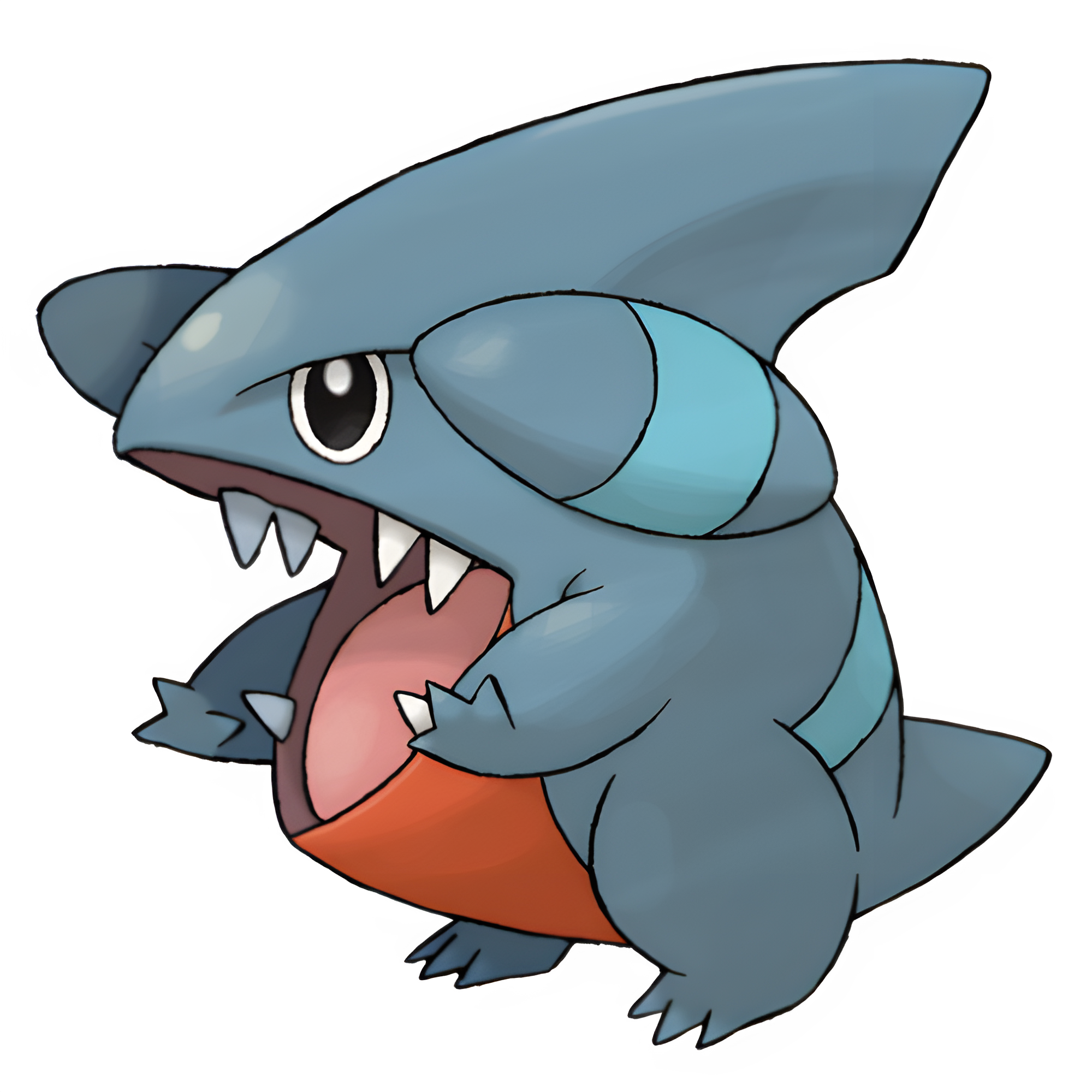Facts for Kids
Gible is a small, dragon-like Pokémon that is formidable despite its size, often associating itself with underground environments.
Overview
In Popular Media
Behavior And Diet
Conservation Status
Trivia And Fun Facts
Cultural Significance
Habitat And Distribution
Physical Characteristics
Evolution And Classification

Inside this Article
Personality
Earthquake
Community
Garchomp
Dinosaur
Culture
Pokémon
Gabite
Earth
Did you know?
🐉 Gible is known as the Land Shark Pokémon.
🌍 Gible is a Dragon/Ground-type Pokémon introduced in Generation IV.
⚔️ Gible evolves into Gabite starting at level 24.
🏆 Gible has a base stat total of 300.
💧 Gible is known to be highly territorial and will challenge Pokémon that intrude into its area.
🔄 Gible can learn moves like Dragon Rage and Take Down.
🌌 Gible has a unique ability called Sand Veil, which increases its evasion in a sandstorm.
🎮 Gible can be found in caves and is often associated with deep underground areas.
📏 Gible stands at a height of 0.6 meters (2 feet).
🦈 Gible is known for its strong jaws, which it uses to dig and bite.
Introduction
It is known as the Land Shark Pokémon. Gible is a Dragon/Ground-type Pokémon, which means it can learn some cool moves! Gible first appeared in Pokémon Diamond and Pearl, introduced by the famous Pokémon creator, Satoshi Tajiri, in 2006. Its Pokédex number is 443, and it evolves into Gabite at level 24 and then into the powerful Garchomp at level 48. Gible is known for its friendly nature but can be fierce when it battles! ⚔
️
In Popular Media
In the animated series, Ash Ketchum and his friends have encountered Gible on their adventures. Fans also love Gible in trading card games, where it can be used in battles against other Pokémon cards! Gible is often featured in merchandise like plush toys, T-shirts, and even cartoons. Its fun personality keeps fans excited and entertained! 👾
Behavior And Diet
️ It uses its powerful jaws to dig through the ground, searching for food like small plants and minerals. Gible is known for its friendly nature. It often plays with other Pokémon, but when it feels threatened, it can become very brave! Gible loves to battle and enjoys showing off its strength. It may bite, but this is only a sign that it wants to play! 🥳
Conservation Status
It is important to keep areas like caves and rocky regions clean and safe for Gible and many other Pokémon. While Gible itself doesn't disappear, protecting its environment helps keep the entire Pokémon community healthy and thriving! Remember, every Pokémon plays a role in its ecosystem! 🌈
Trivia And Fun Facts
️ Gible is not just a favorite among trainers, but it can also learn powerful attacks that can win battles! Gible’s favorite type of weather is sunny, making it energetic and ready to play outside! ☀
️ Additionally, Gible is quite rare to find; trainers feel lucky when they discover one! Gible teaches us that being small doesn't mean you can't be mighty! 💪
Cultural Significance
It represents determination and courage, showing that even small Pokémon can be strong. Gible has appeared in many Pokémon games, trading cards, and animated series, making it a recognizable character! It teaches kids the value of friendship and teamwork when battling alongside other Pokémon. Gible's popularity has made it a beloved figure in Pokémon culture! ❤
️
Habitat And Distribution
️ You can usually find it in places like the Sinnoh region, where it first appeared, as well as other regions like the Unova and Galar regions. Gible likes to hide in the dark corners of caves and will often dig tunnels underground. This makes it hard to catch, but if you search carefully, you might just spot one! In the Pokémon world, Gible is mostly found in areas that have lots of earth and rocks for it to play with. 🌍
Physical Characteristics
️♂️ Its body is blue with a cream-colored underside, and it has big, sharp teeth that it uses for biting! Gible also has small, wing-like fins on the sides of its face. These help it swim in the water! Gible’s unique design makes it look like a mix between a dinosaur and a shark. Its adorable size and friendly expression make it a favorite among Pokémon fans! 😊
Evolution And Classification
Gabite then evolves into Garchomp at level 48. Like a superhero, Garchomp is much bigger and can fly! Gible belongs to the Dragon and Ground-type classifications, which makes it very unique in Pokémon battles. Its evolutions are all part of the same family, each getting stronger and more powerful as they grow! 🌌

